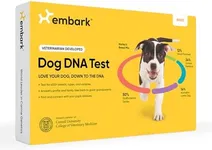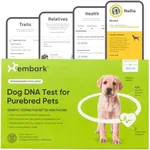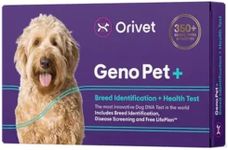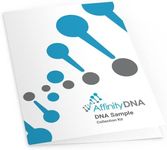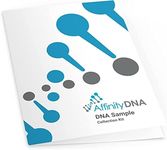Buying Guide for the Best Dog Dna Test
Choosing the right dog DNA test can be a rewarding experience, as it provides insights into your dog's breed composition, health predispositions, and ancestry. When selecting a test, consider what you hope to learn about your dog. Some tests focus on breed identification, while others provide detailed health screenings or ancestry information. Understanding the key specifications of these tests will help you make an informed decision that aligns with your needs and expectations.Breed IdentificationBreed identification is a primary feature of dog DNA tests, revealing the different breeds that make up your dog's genetic makeup. This is important for understanding your dog's behavior, size, and potential health issues. Tests vary in the number of breeds they can identify, ranging from a few dozen to over 350. If you're curious about your dog's breed mix, choose a test with a comprehensive breed database. For those with mixed-breed dogs, a test with a larger breed database may provide more accurate results.
Health ScreeningHealth screening in dog DNA tests can identify genetic markers associated with certain health conditions. This is crucial for proactive health management and can guide you in making informed decisions about your dog's care. Tests may screen for a few genetic conditions or hundreds of potential health risks. If you're concerned about your dog's health or have a breed prone to specific conditions, opt for a test with extensive health screening capabilities. This can help you and your vet develop a tailored health plan for your dog.
Ancestry and Family TreeAncestry and family tree features provide insights into your dog's lineage, showing their genetic relatives and tracing their ancestry back several generations. This can be fascinating for understanding your dog's background and connecting with other dog owners. Some tests offer detailed family trees, while others provide more basic ancestry information. If you're interested in your dog's heritage or connecting with their relatives, choose a test that offers a detailed ancestry report.
Sample Collection MethodThe sample collection method refers to how the DNA sample is obtained from your dog, typically through a cheek swab or saliva sample. This is important for ease of use and ensuring a good quality sample. Most tests use a simple cheek swab, which is non-invasive and easy to perform at home. If you have a dog that is sensitive or uncooperative, consider a test with a straightforward collection process to minimize stress for both you and your pet.
Turnaround TimeTurnaround time is the period it takes to receive results after submitting your dog's DNA sample. This is important for managing expectations and planning any follow-up actions. Turnaround times can range from a few weeks to a couple of months. If you need results quickly, look for tests with shorter processing times. However, keep in mind that more comprehensive tests may take longer due to the detailed analysis involved.
User Interface and Report DetailThe user interface and report detail refer to how the test results are presented to you, including the clarity and depth of information. This is important for understanding and utilizing the results effectively. Some tests offer detailed, easy-to-understand reports with visual aids and actionable insights, while others may provide more basic information. If you prefer a comprehensive understanding of your dog's DNA, choose a test with a user-friendly interface and detailed reporting.

